For detailed information, other images and documents, please select individual articles from the following table.
Hammer-in anchor W-SD
Push-through installation anchor for wood, metal and panel materials. For concrete
Register now and access more than 125,000 products


Variants
Stop bits must be used
Anchors and stop bits form a perfectly coordinated system. This system unit prevents installation errors and ensures attachment as stipulated in the approval.
- Installation type: Push-through installation
- Small drill hole depth (W-SD 6: 32 mm; W-SD 6L: 42 mm; W-SD 8: 43 mm)
- Low minimum component thickness (hmin = 80 mm)
- Small drill hole diameter
- Immediate load-bearing capacity – no waiting after insertion
- Easy insertion — no installation torque
- Anchorage via friction locking – distance-controlled expanding anchor
Multiple attachment of non-load-bearing systems in concrete
European Technical Approval ETA-07/0138
Dimensioned in accordance with the European Technical Approval Guidelines (ETAG) for "Metal Anchors for Use in Concrete", Appendix C, measurement process C
Fire resistance (anchoring base: concrete C20/25 to C50/60): R30, R60, R90, R120 (W-SD M6L, W-SD M8): Technical Report TR 020 "Evaluation of anchorages in concrete concerning resistance to fire" (included in ETA-07/0138)
The partial safety factors of the resistances regulated in the approval and a partial safety factor of the effects of γF = 1.4 have been taken into account. Please refer to the European Technical Approval Guidelines (ETAG), Appendix C, for information on combining tensile and transverse loads, edge influence and groups of anchors.
The partial safety factors for load-bearing capacity on exposure to fire of yM,fi = 1.0 as recommended in the approval and the partial safety factor of the effects of yF = 1.0 have been taken into account.
Carbide masonry drills must comply with the specifications set out in the code of practice of the German institute of building technology (DIBt) and the Association of German Tool Manufacturers (FWI) on the characteristics, requirements and tests of masonry drills with carbide cutting inserts used to drill holes for fixing anchors. Würth hammer drills meet the specifications set out in the code of practice.
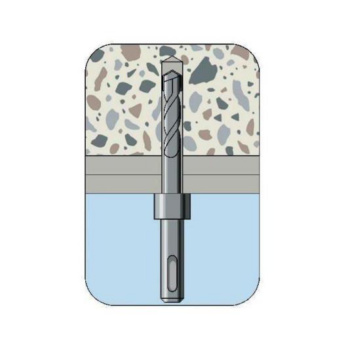 Create the drill hole
Create the drill hole
 Clean the drill hole
Clean the drill hole
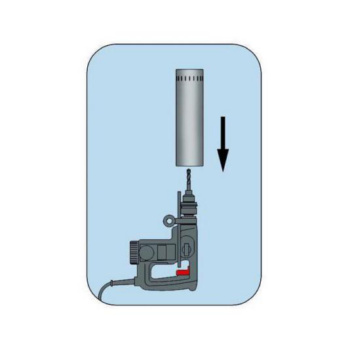 Put setting tool onto stop bit
Put setting tool onto stop bit
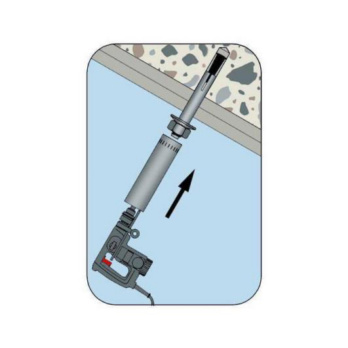 Install anchor
Install anchor
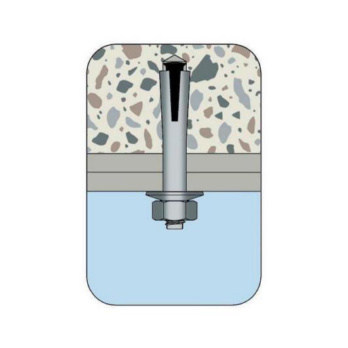 Installation status
Installation status
 Create the drill hole
Create the drill hole
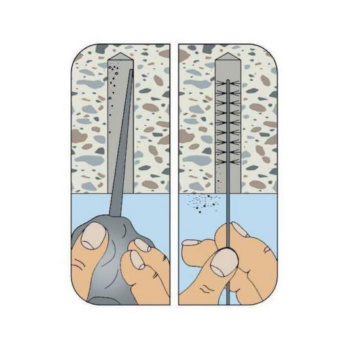 Clean the drill hole
Clean the drill hole
 Put setting tool onto stop bit
Put setting tool onto stop bit
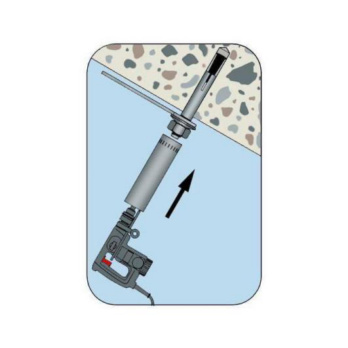 Set the dowels with a hanger
Set the dowels with a hanger
 Installation status
Installation status
Multiple attachment of non-load-bearing systems in concrete
European Technical Approval ETA-07/0138
Dimensioned in accordance with the European Technical Approval Guidelines (ETAG) for "Metal Anchors for Use in Concrete", Appendix C, measurement process C
Fire resistance (anchoring base: concrete C20/25 to C50/60): R30, R60, R90, R120 (W-SD M6L, W-SD M8): Technical Report TR 020 "Evaluation of anchorages in concrete concerning resistance to fire" (included in ETA-07/0138)
Can be used for multiple attachment of non-load-bearing systems in concrete, anchorage of lightweight ceiling cladding and suspended ceilings
Anchorage with European Technical Approval in cracked concrete (tension zone) and non-cracked concrete (compression zone). The anchor has European Technical Approval for use in reinforced or non-reinforced standard concrete with a strength class of min. C20/25 and max. C50/60 in accordance with EN 206:2000-12
The anchor may be used for anchorages with predominantly static loads or quasi-static loads; W-SD (galvanised steel) can be used in dry indoor areas
Suitable for attaching ceiling substructures with eyelet wire, vernier hangers, perforated strips, suspended ceilings, sliding ceiling connectors, roof battens, wooden beams, fire resistance panels etc.
Select RAL-colour code
!! NOTE: On-screen visualisation of the colour differs from real colour shade!!



